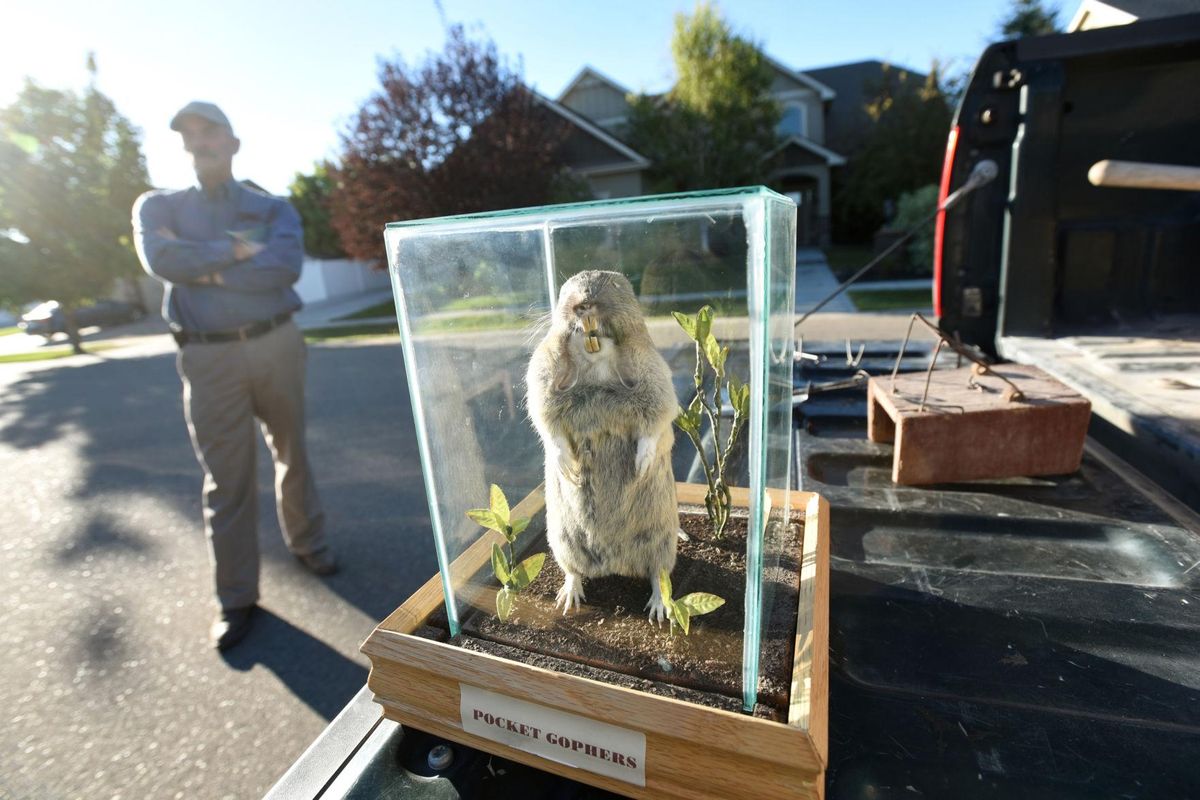Idaho’s Canyon County goes “Caddyshack” on gopher population

NAMPA — The Canyon County, Idaho pest control district has declared one rodent a pest worth trapping: the pocket gopher.
The gophers cause property damage including burrowing, and eat the roots of perennial plants. Idaho has had gopher-control efforts for years, partly because of the damage, and partly because farmers in the Idaho Legislature “didn’t have anything else to do in the winter but pass laws” and allowed for the creation of local pest control districts, said Jim Martell, gopher trapper and the county’s gopher control supervisor.
The pest district traps gophers and also pays a bounty of $1 per tail to people who bring them to the district office.
More than 28,000 have been turned in for payment this fiscal year. That’s down from just over 40,000 gopher tails turned in for bounty by this time last year.
Martell said there are fewer trappers this year – and, he suspects, more gopher-eating barn owls. The pest district will install a barn owl house on a property to provide natural pest control. The Canyon County website says a pair of barn owls and their young can eat 3,000 gophers a year, plus mice and voles.
“There has been significant help because of the barn owls,” Martell said.
Martell said he sets most traps in subdivisions that were formerly farmland.
“The farmer leaves; the gopher stays,” he said.
Called ‘pocket gophers for a reason’
Martell and his team brought three different kinds of gopher traps and a model stuffed gopher to explain a pocket gopher to prospective clients at a trapping call in Nampa last month.
Model gopher in hand, Martell said, “with those claws and those teeth, they can dig like crazy.”
But, Martell said what really sets them apart is deep pockets near their mouth for food storage.
“They go along the tunnels; they will stuff those roots in those side pouches and then carry them back to their pantry, I call it,” Martell said.
Pocket gophers primarily eat the roots of perennial plants including alfalfa seed, a problem Martell dealt with when he was a farmer. The gophers in the Nampa subdivision, though, like to eat a prickly weed called Canada thistle.
Females build horseshoe-shaped tunnels
In between a swing set and a fence in Kent Shurtleff’s backyard in Nampa is a patch of Canada thistle – and not surprisingly a handful of dirt mounds piled up from gopher digs.
“They went away for a little while, and then they came back,” said Shurtleff.
Martell told Shurtleff that gophers likely migrated into the subdivision from an agricultural field nearby.
Martell and his team, Roger Tish and Norma Hosford, examined tunnels that were evidenced by mounds of dirt. The mounds were “horseshoe shaped,” they said.
Given the arrangement of the tunnels, it had to be a female gopher, Martell said.
“She’s probably trying to collect enough to build her nest. Females will stay in one area, and they really search,” Martell said. “Males like to travel in a straight line because they are chasing females; the males are kind of travelers.”
Sure enough, the traps nabbed a female gopher.
History of gopher control
Martell has been trapping gophers full time with Canyon County Pest Control since the late 1990s. He trapped his first gopher in his teens, but really honed the skill while he was a farmer.
Previously the pest control office where Martell works, which was founded in 1974, was located at the county courthouse.
That didn’t last long.
“The people would bring their tails into the courthouse, and so the commissioners decided that it was a better fit for the weed department that was located offsite,” Martell said.
The pest control district, which includes gopher trapping and a separate department called noxious weeds, is now located at that site.
Over Martell’s 23-year tenure at the pest control office, he recalled several times in which gophers had dug massive holes in canals that caused flooding in Canyon County subdivisions.
Pest Control services are provided through a special taxing district; it receives funding from a levy paid by property owners outside of city limits in Canyon County.
The levy rate is $6.63 per $100,000 of assessed value, according to Canyon County Controller Zach Wagoner.
The total expenditures for the district are expected to be $225,201 in fiscal year 2017. The most significant portion of the expenses budget goes out to pay gopher bounty.